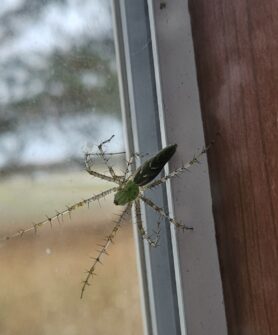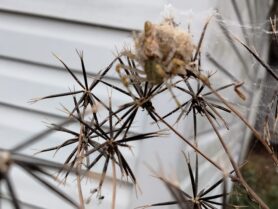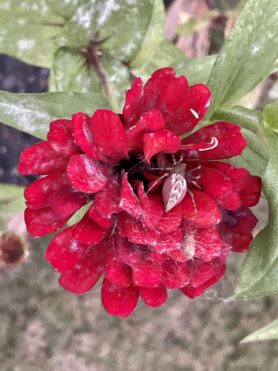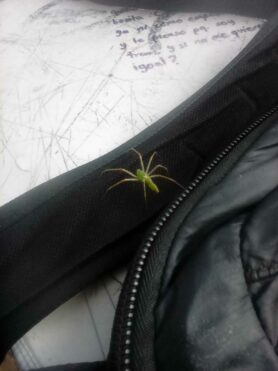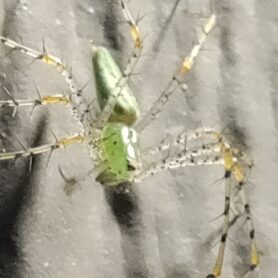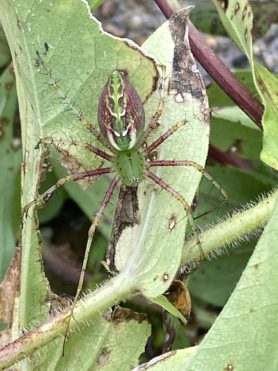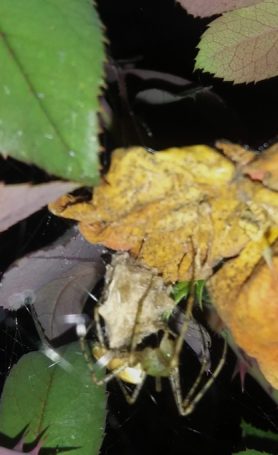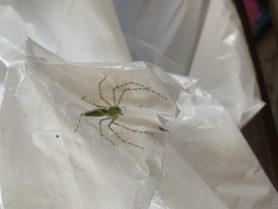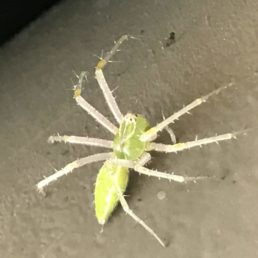Taxonomic Hierarchy
- Kingdom: Animalia
- Phylum: Arthropoda
- Class: Arachnida
- Order: Araneae
- Suborder: Araneomorphae
- Family: Oxyopidae
- Genus: Peucetia
- Species: Peucetia viridans
Common Name (AAS )
)
Green Lynx Spider
Other Common Names
Lynx Spider
Author
Nicholas Marcellus Hentz, 1832
Primary Colors
Sightings Overview
There have been 23 confirmed sightings of Peucetia viridans (Green Lynx Spider), with the most recent sighting submitted on November 21, 2023 by Spider ID member ldmayo. The detailed statistics below may not utilize the complete dataset of 23 sightings because of certain Peucetia viridans sightings reporting incomplete data.
- Web: 30% of the time, Peucetia viridans spiders are sighted in a spider web (Sample size: 23)
- Sex: 7 female and 1 male.
- Environment: Peucetia viridans has been sighted 25 times outdoors, and 2 times indoors.
- Outdoors: Man-made structure (10). On flower (4). Low foliage (8). High foliage (1). Forest (1). Desert area (1).
Location and Range
Peucetia viridans (Green Lynx Spider) has been sighted in the following countries: Mexico, United States.
Peucetia viridans has also been sighted in the following states: Alabama, Arizona, Georgia, Mississippi, North Carolina, Oklahoma, South Carolina, Texas.
Seasonality
Peucetia viridans has been primarily sighted during the month of September.
- January:
- February:
- March:
- April: 2
- May: 2
- June: 2
- July: 1
- August: 5
- September: 6
- October: 3
- November: 1
- December: 1
Additional Remarks
- Coloration and pattern can vary on the abdomen, often due to habitat or the age (instar) of the spider, but is typically a bright green color (can be reddish-pink or purple in some individuals). Most specimens also have pairs of white and/or burgundy diagonal lines down the center of the abdomen, which point forward towards the “head” of the spider.
- May actively stalk its prey, running and jumping from branch to branch with ease, which is how it earned the nickname “lynx spider.”
- In one study conducted in California among dry coastal sage-scrub, it was found that various hymenopterans constituted 41% of the Green Lynx Spider’s diet, with the main species being Apis mellifera, commonly known as the “honey bee” (Turner 1979).
- Green Lynx Spiders actually mate in mid-air while suspended on a silken tether line. Their courtship and copulation is described in great detail in Whitcomb & Eason 1965.
- Most females only create one egg sac but, in warmer (more southerly) conditions, they may create 2-3 egg sacs total.
- Egg sac is light yellow or greenish color when fresh, and darkens to gray or brown over time; usually has some small spiky projections and is fairly large (~2cm in diameter) and firmly anchored to twigs and leaves where the mother vigorously guards it.
- Brood size averages about 200 eggs, but can range anywhere from 25-600.
- The mother spider uses her jaws to tear open the egg sac to help her young emerge, however, unlike “wolf spiders,” the babies do actually have the ability to free themselves by tearing their own tiny holes in the sac to escape.
- Species is known for the ability to “spit” its venom up to 8 inches when feeling threatened (Fink 1984, Tinkham 1946).
- Spiders are apparently capable of changing their body color to adapt to their environment (ranges from various shades of green, brown, and reddish-purple or pink).
- Can be mistaken for the nearly identical species, Peucetia longipalpis, whose distribution overlaps in the southwestern USA.
- The “Magnolia Green Jumper” (Lyssomanes viridis) has similar green coloration and may be mistaken for this spider, but it’s a member of a completely different family called Salticidae and has a very different eye arrangement.
- There have been some verified bites by this spider (Bush et al. 2000), probably because the females can be so protective of their egg sacs. However, in all the reported cases, the symptoms were benign.
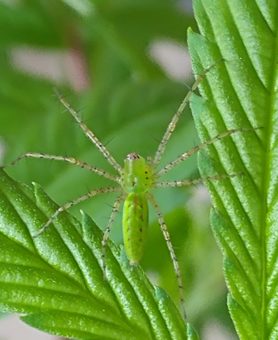 The spider species Peucetia viridans, commonly known as Green Lynx Spider, belongs to the genus Peucetia, in the family Oxyopidae. Peucetia viridans spiders have been sighted
The spider species Peucetia viridans, commonly known as Green Lynx Spider, belongs to the genus Peucetia, in the family Oxyopidae. Peucetia viridans spiders have been sighted 